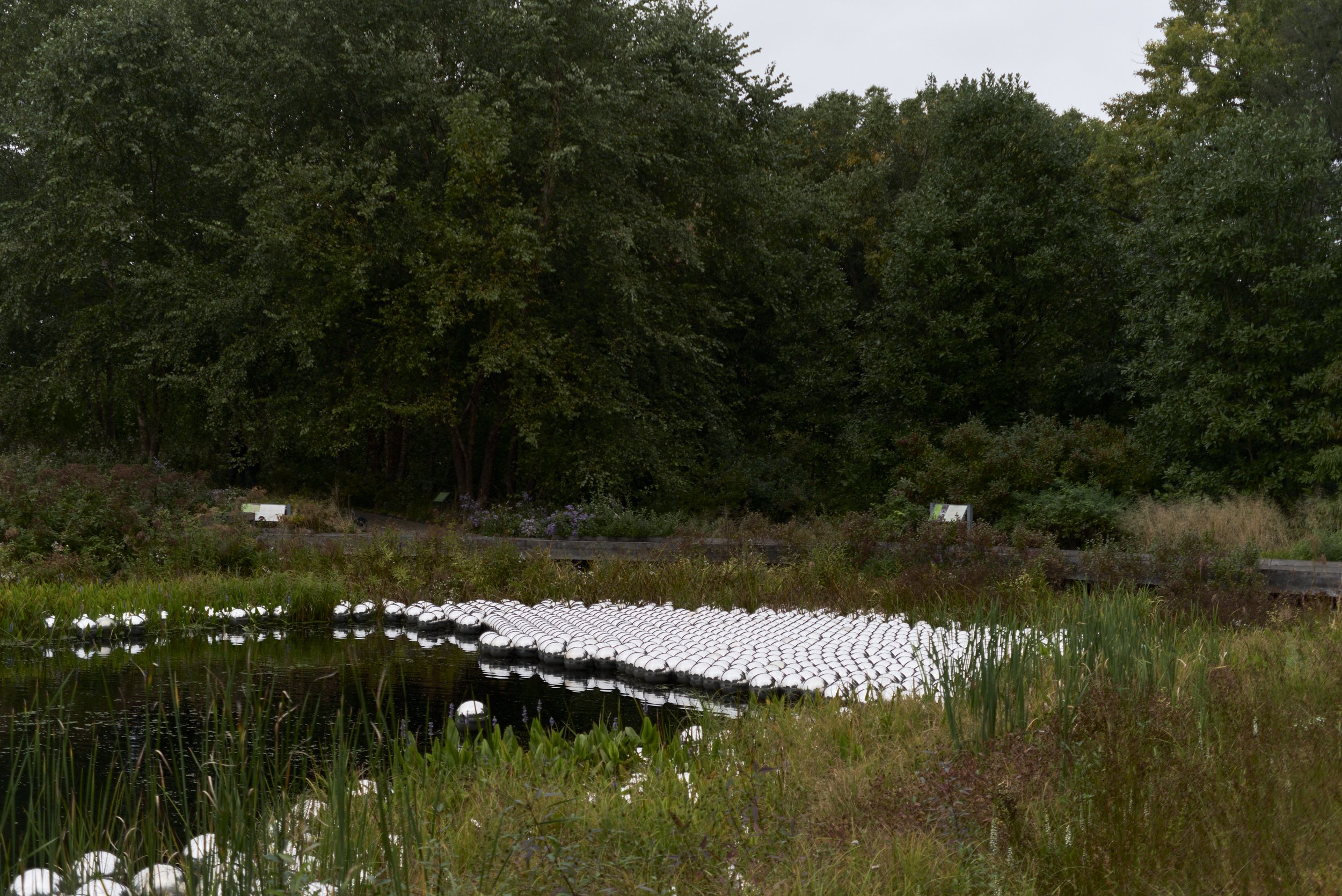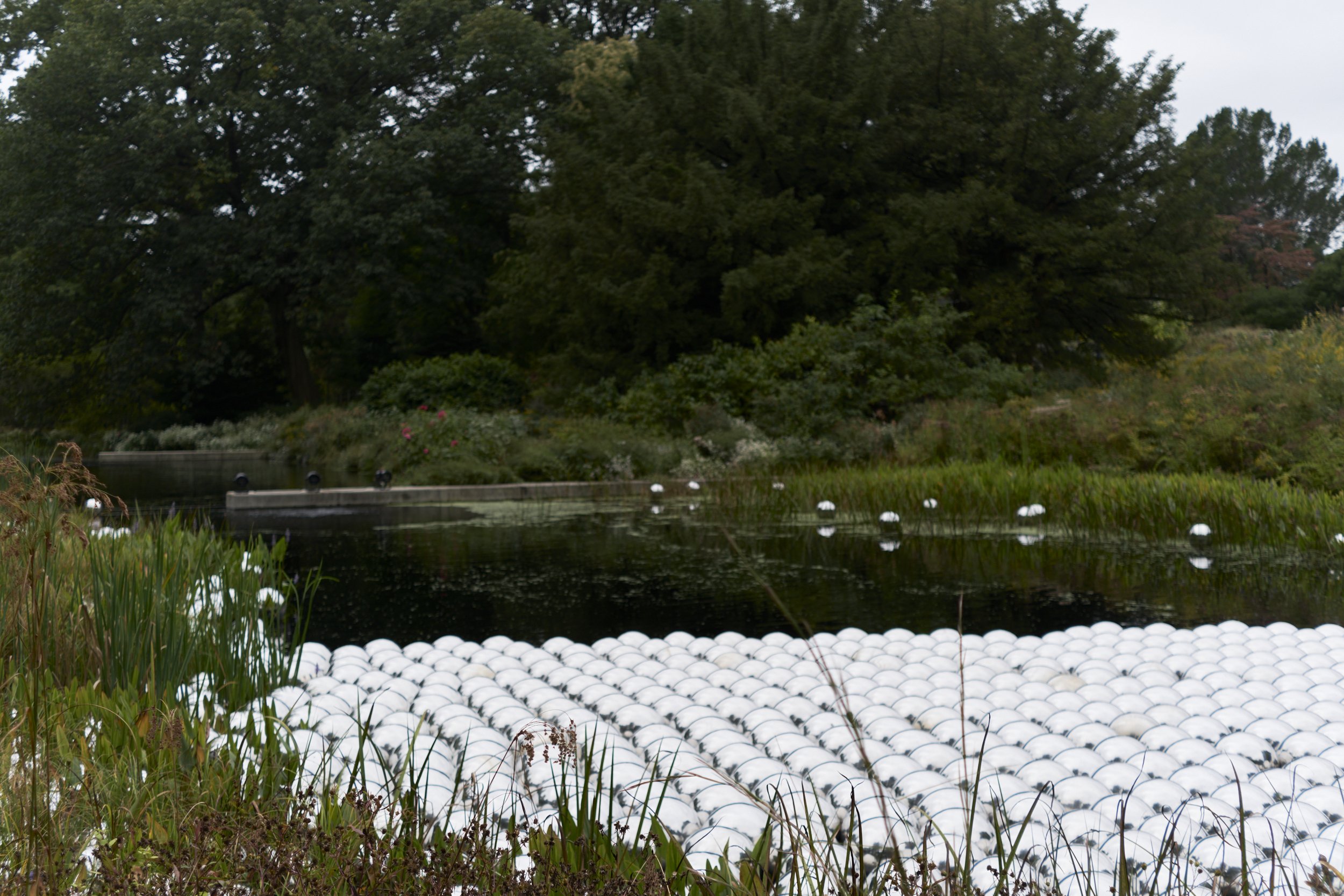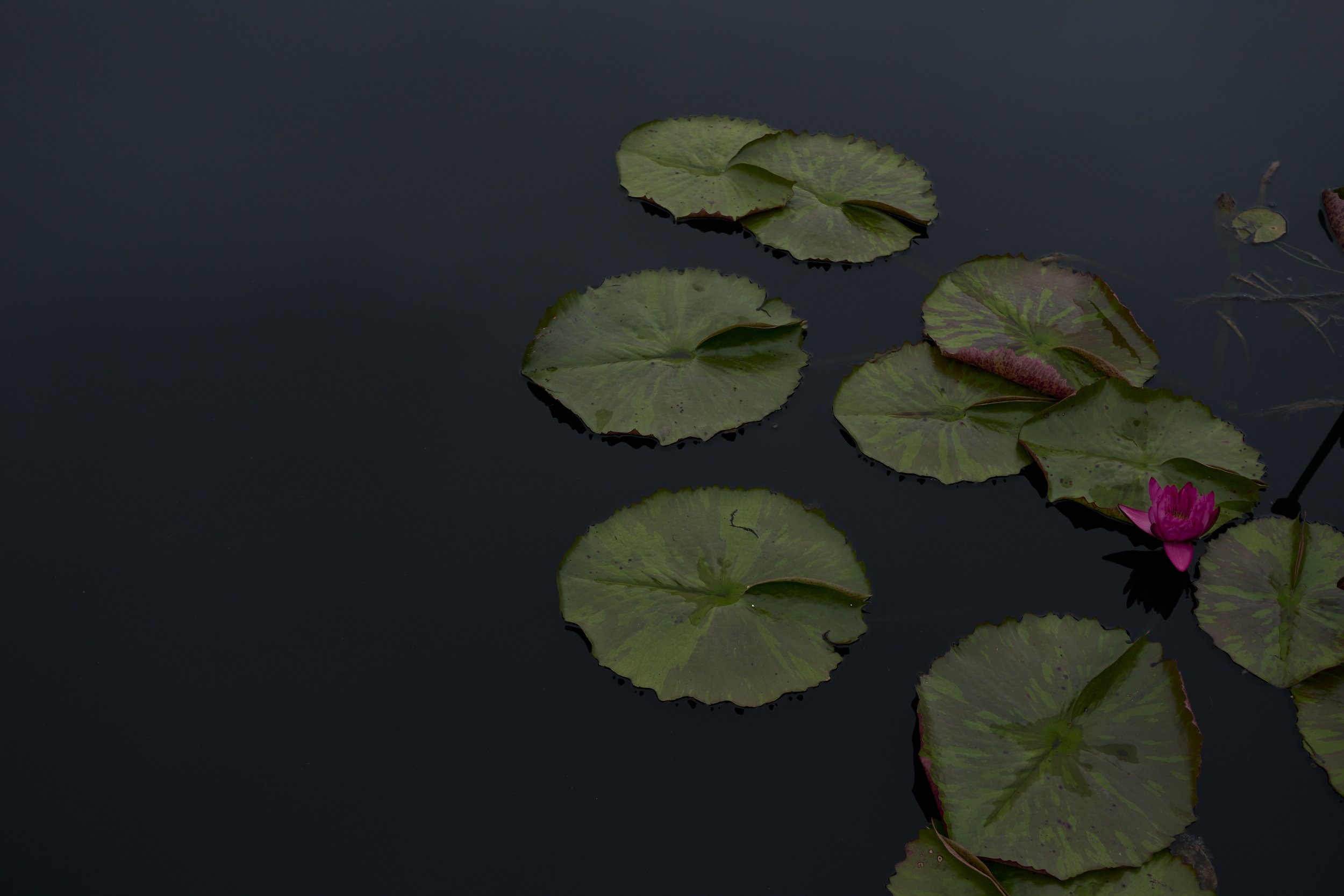Finding Kusama at the New York Botanical Garden
The first time I got a taste of Yayoi Kusama’s brilliance was at the Broad in Los Angeles in 2017. Her exhibition, Yayoi Kusama: Infinity Mirrors, showcased a slew of her signature mirrored rooms that had catapulted her to worldwide prominence. For most people, including myself, experiencing each of the installations was akin to entering and existing momentarily in a fantastical illusion. Since then, my fascination had extended from Kusama’s multi-disciplinary works to the eccentric artist herself.
Beyond the vibrant patterns, dizzying dots and endearing pumpkin sculptures that have become so often synonymous with the Japanese artist, there’s a melancholic story of a woman struggling to navigate her way through life’s lonely labyrinth. At 92 years old and residing voluntarily in a sanitarium, Kusama has led a troubling life stricken with hallucinations, illnesses and suicide attempts. Learning about her traumatic childhood and adolescent hardships shifted the way I later perceived her art. The childlike wonder that often stirred within me had almost entirely been replaced with compassion. Just as essential as the air we breathe, Kusama sustains herself by creating art that channels her subconscious and deepest turmoils. Art is quite simply the pair of arms she finds solace in.
“If it were not for art, I would have killed myself a long time ago.”
If there’s one source of inspiration that pervades Kusama’s works, it’s her boundless connection to nature. Her intrigue of the natural world, from flowers to gardens, transcends her many obsessions. Earlier this year, her exhibition, KUSAMA: Cosmic Nature, which took place at the 250-acre landscape of the New York Botanical Garden in the Bronx, was the culmination of her lifelong awareness and exploration of nature. At a time when the pandemic had deprived us of the unrestricted liberty to enjoy art, I found myself eagerly wanting to rekindle that yearning, especially when there was a rare opportunity to lose myself in Kusama’s greatness.
I Want to Fly to the Universe (2020), Yayoi Kusama
Pumpkins Screaming About Love Beyond Infinity (2017), Yayoi Kusama
Upon entering the New York Botanical Garden, one of Kusama’s latest installations, I Want to Fly to the Universe (2020), stood visibly in the distance above a reflecting pool. The bio-morphic flower form, with its tentacle-like petals, seemed to dance above the water. Past the Visitor Center of the Garden displayed inside a dark room was Pumpkins Screaming About Love Beyond Infinity (2017), a small mirrored vessel containing glowing pumpkins and one of many exemplifications of Kusama’s fondness for pumpkins.
I made my way to the Native Plant Garden where another one of Kusama’s installations, Narcissus Garden (2021), presided. This particular installation was comprised of 1,400 stainless steel orbs that naturally moved across the surface of a pond as wind and water current shifted, forming unexpected patterns over time.
Narcissus Garden (2021), Yayoi Kusama
I decided to detour from my intended route to explore the massive grounds of the New York Botanical Garden. The footpath I took would eventually lead me east to the Bronx River which bisected the Garden. As I walked, I filled my lungs with the wholesome autumn air, lightly fragranced by the woodiness of pine and damp earth. Soon, I noticed an entry point of an inconspicuous trail that ran deep towards the heart of the Thain Forest. Curious, I followed it. Several minutes in, my thirst for calm and relaxation was quenched. Amongst the towering evergreen trees, I engaged in a brief ‘forest bathing’ before retracing my steps.
Staying on the main path brought me to the Chilton Azalea Garden, the Goldman Stone Mill and the Rockefeller Rose Garden. One could easily spend the entire day learning about the history of the sites and the rich ecosystem of the Garden.
Built in 1940, the Goldman Stone Mill is a National Historic Landmark and New York City Landmark.
The Rockefeller Rose Garden houses over 670 varieties and was designed by Beatrix Farrand in 1916.
Japanese anemones seen at the New York Botanical Garden
The Flower Obsession installation at the Garden was an iteration of Kusama’s series of artworks called Obliteration Rooms. Viewers were invited to interact with an outdoor furnished space by attaching flower stickers to anywhere they liked. Inspired by Kusama’s earliest hallucinations of flowers growing on every surface in view and her time spent in the greenhouses of her family’s seed nursery, the installation spoke to these past events of her life.
Flower Obsession (2020), Yayoi Kusama
Travelling west, I arrived at the gently sloped front lawn of the Mertz Library. 100-year-old American tulip trees lined the avenue to the property’s entrance. Gradually materializing in view was the Fountain of Life, designed by American Renaissance sculptor Charles Tefft. The Library’s Art Gallery served as a temporary exhibition space for Kusama’s paintings, including My Eternal Soul (2009—present) and Alone, Buried in a Flower Garden (2014), as well as her assemblage boxes, which often displayed exaggerated sexual organs of flowers that exemplified themes of organic growth, proliferation and reproduction. These works served as a more intimate gateway to Kusama’s connection with nature, the cosmos and the afterlife and shouldn’t be glossed over if one wanted to truly understand the artist.
(Note: Photography was strictly prohibited at the Mertz Library’s Art Gallery. For visuals of the aforementioned artworks, please visit this link.)
The Fountain of Life features sculptures of sea nymphs, seahorses, cherubs, and a startled mermaid and merman.
I headed south towards the Enid A. Haupt Conservatory, where one of Kusama’s latest pumpkin sculptures, Dancing Pumpkin (2020), loomed near the building’s entrance. From a quick glance, it seemed to take on the form of an animated tentacled creature, a playful reinforcement of Kusama’s belief that all of nature is alive and interconnected.
Inside the glass dome of the conservatory, oversized stainless steel flowers set the stage for a whimsical spectacle as their vibrant colours juxtaposed against the tropical lushness in the rear. The flowers’ dotted patterns conveyed the silent message that all living things are made of cells. This installation, My Soul Blooms Forever (2019), was a love letter to Kusama’s adoration for flowers.
Dancing Pumpkin (2020), Yayoi Kusama
My Soul Blooms Forever (2019), Yayoi Kusama
As I journeyed deeper into the conservatory, I came across an elongated pavilion with meticulously executed planting beds of orange, red and purple varieties that mimicked the same hues seen in Kusama’s painting, Alone, Buried in a Flower Garden (2014). Just taking in the colourful mosaic of their foliage was tremendously uplifting.
At the end of the pavilion was a circular room densely populated by greenery. Nestled in the middle was the glimmering Starry Pumpkin (2015). This piece harked back to Kusama’s first encounter with a pumpkin. The surrounding environment was purposefully designed as a reenactment of that formative moment in the artist’s life. The planting encircling the installation changed with the seasons. As my visit was in October, chrysanthemums were prominently featured.
Starry Pumpkin (2015), Yayoi Kusama
Past several doors, I eventually found myself in the enclosed courtyard of the conservatory, facing the grand, Italian-Renaissance-style dome. The cool air dissipated any lingering humidity I was feeling. Over the adjacent pool, the Hymn of Life―Tuplis (2007) existed harmoniously amongst water lilies and reeds. I paused to immerse myself in this beauty before me.
Hymn of Life―Tuplis (2007), Yayoi Kusama
Almost four years ago, my curiosity for modern art was reignited upon stepping inside Kusama’s infinity mirrored rooms, so it seemed befitting that I chose to experience Infinity Mirrored Room—Illusion Inside the Heart (2020) at the final leg of my tour of the Garden. The installation was sheltered inside a reflective cube structure that responded to natural light through coloured glass. Much like her other infinity mirrored rooms, Illusion Inside the Heart was Kusama’s invitation to her unique albeit abstract perceptions of the metaphysical. As the door closed behind me once I was inside, I was gazing at what seemed like an abyss lit with a million glowing dots of blue, red, green and yellow. In this confined solitude, I could almost hear them glinting in the darkness.
“There are ten billion bubbles inside my body. Which is precisely why I feel at one with the ten billion stars that twinkle in the heavens, and why I talk to the clouds made up of ten billion tiny drops of water and why I hear the voice of the wind carrying ten billion atoms.”
Infinity Mirrored Room—Illusion Inside the Heart (2020), Yayoi Kusama
In a generation where human’s relationship with the natural environment seems to be in a disarray, I am grateful for prolific artists like Yayoi Kusama who remind us, through their painstaking works, that all organisms, living or dead, are inextricably interconnected. We should collectively strive to be gentle with nature for it will pay back in beauty.


























